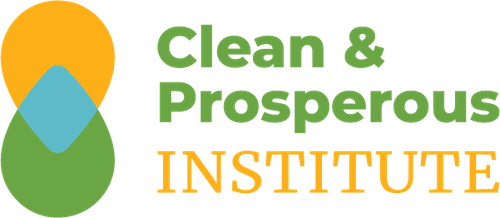The Washington Business Alliance developed the Washington State GHG Reduction Explorer to project the outcomes of various policy proposals that tax/regulate greenhouse gas emissions. We evaluate two scenarios for this analysis: one with what we believe are relatively optimistic assumptions about Clean Energy Account investments and one with what we believe are relatively pessimistic assumptions about the Clean Energy Account investment cost-effectiveness.
Clean & Prosperous Washington
GHG Modeling
Modeling Analysis of SB 5930 (Sen. Palumbo) Carbon Tax Proposal – Additional Details
Using a proprietary modeling system, the Washington Business Alliance analyzed the expected outcomes of Senator Palumbo’s Carbon Tax Bill, Senate Bill 5930. SB 5930 is projected to generate a peak of roughly $1.8 billion/year in 2024 (in USD, 2018), and reduce greenhouse gas emissions by a similar amount as the Clean Air Rule (CAR): around 180 million metric tons of carbon dioxide equivalents (MtCO2e) give or take around twenty percent.
Modeling Analysis of SB 5930 (Sen. Palumbo) Carbon Tax Proposal
Using a proprietary modeling system, the Washington Business Alliance analyzed the expected outcomes of Senator Palumbo’s Carbon Tax Bill, Senate Bill 5930. SB 5930 is projected to generate a peak of roughly $1.8 billion/year in 2024 (in USD, 2018), and reduce greenhouse gas emissions by a similar amount as the Clean Air Rule (CAR): around 180 million metric tons of carbon dioxide equivalents (MtCO2e) give or take around twenty percent.
Carbon Policy Explorer Enables Better Decision-Making
At the Business Alliance we began to wonder how effective these different policies are likely to be at actually reducing GHG emissions and at what price. So we developed analytical software tools to evaluate the many scenarios being proposed. In evaluating all these proposals, voters and lawmakers alike are facing a lack of basic information about the different proposals. It’s difficult to identify comparative fiscal impacts, likely changes in energy costs, and the projected effectiveness of each policy in lowering greenhouse gas (GHG) emissions. That is why the Washington Business Alliance developed the GHG Reduction Explorer, intending to project the outcomes of various policy proposals that aim to price and regulate greenhouse gas emissions.
The Business View on I-732
As voters consider I-732 this election, it’s important to have accurate information on this initiative, the first in our nation proposing a carbon tax. Much has been written about I-732, some of it inaccurate.
Understanding Carbon Reduction: Marginal Abatement Cost Curves
A Marginal Abatement Cost Curve (MAC curve or MACC) is a succinct and straightforward tool for presenting carbon emissions abatement options relative to a baseline (typically a business-as-usual pathway). A MAC curve permits an easy to read visualization of various mitigation options or measures organized by a single, understandable metric: economic cost of emissions abatement.
